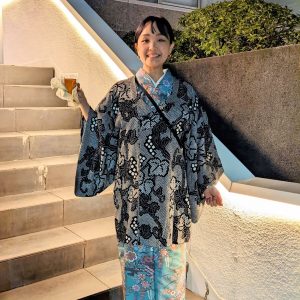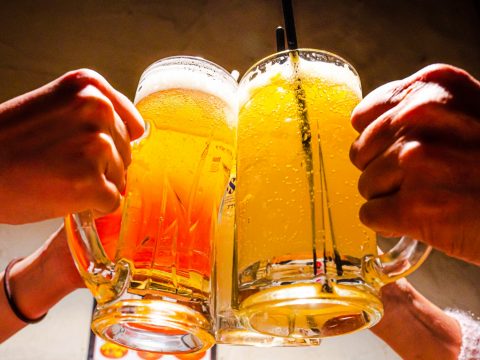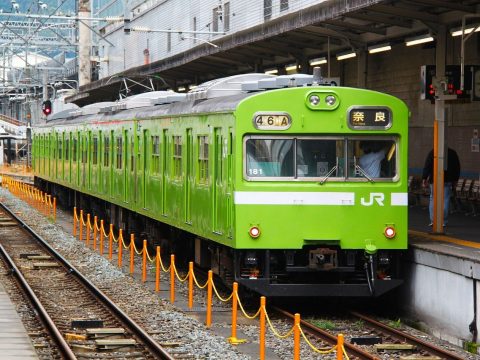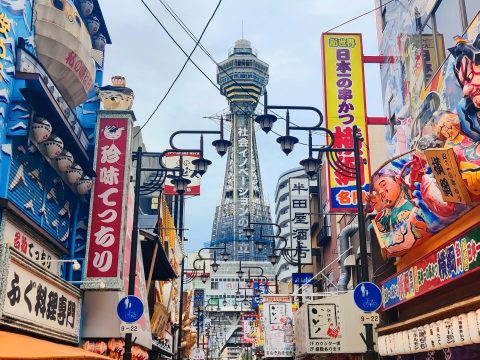Lunchtime at work(昼食の時間)
WORK’IN JAPAN
30.06.2025
What’s something you look forward to when you go into the office? For me, while I enjoyed seeing my colleagues I got along with, what I looked forward to the most was lunchtime. It’s always exciting when I’ve packed my favorite dishes in my bento box, or when I go to a restaurant near the office. This time, I’d like to talk about lunchtime in Japanese workplaces.
Bento Box
Bringing a ‘bento’ to work was often my go-to, though it depends on the person. First and foremost, it’s a great way to save money. Plus, it helps prevent overeating and allows you to include healthy ingredients. Often, I’d just make extra dinner the night before and pack the leftovers for lunch, so it wasn’t too much effort. Also, Japanese supermarkets have a fantastic selection of frozen foods perfect for bento boxes, which I used frequently.
Sometimes, I’d just make rice balls (‘onigiri’) and then buy soup from a convenience store to eat with them.
Most offices are equipped with a refrigerator, microwave, and kettle for employees to use. So, once I got to work in the morning, I’d put my bento in the fridge, and then heat it up in the microwave before eating, so there were no worries about hygiene. Using ice packs is also a good idea, especially in the summer.

Office Lunch Options: Cafeterias, Restaurants, and Convenience Stores
Depending on the office, some have a company cafeteria. You can buy lunch there at very reasonable prices. Prices vary by location, but at an office where I used to work, ramen, soba, and udon were around 300 yen, and set meals were about 500 yen. You could get a free large serving of rice, and add things like natto, boiled eggs, or salad for an extra 50 to 100 yen.
If the office is in a large building, there might be restaurants and convenience stores in the basement or elsewhere in the building. Restaurants often offer affordable lunch sets during lunchtime, usually around 1000 yen, where you can enjoy a set meal. They might also sell bento boxes. Prices depend on the restaurant, but you can generally find delicious bento for around 1000 yen. If you buy lunch at a convenience store, you can get things like soba, pasta, sandwiches, and bento boxes for around 500 to 1000 yen.

Makanai(賄い)
People working in the food service industry sometimes have ‘makanai’ as a benefit. ‘Makanai’ is a free meal that the restaurant makes for its employees. At a restaurant where I used to work part-time, the chef would make us ‘makanai’ bento boxes with leftover ingredients after work. I remember really looking forward to eating them the next day.
Also, at a casual dining restaurant where I worked part-time when I was a student, there was no ‘makanai,’ but they gave us discount coupons every month. We could even give the coupons to family and friends, so I would often give them to my friends when I wasn’t going to use them myself.
Enjoy lunchtime!
When you work full-time, you usually get about an hour for your lunch break. I liked to spend that time relaxing by myself at my desk or in the cafeteria, reading a book or checking social media. Sometimes, it was also fun to go out to a restaurant with colleagues I got along with.
What’s lunchtime like at your workplace? If you ever work in Japan, I definitely recommend enjoying the delicious lunches!


Junko Mikami
Junko was born and raised in Kanagawa Prefecture. She spent about three years working and traveling in New Zealand and Australia, followed by trips to North America, Southeast Asia, and Northern Europe. Living abroad made her appreciate Japanese food and culture even more. She now lives in Tokyo, Japan with her American husband.
Read previous articles by the writer
Read latest articles
KEYWORDS
- # PICKPICK
- # Resume
- # alcohol
- # Rice
- # Soup
- # winter food
- # Fast Food
- # seafood
- # spicy foods
- # raw food
- # fermented food
- # Transportation
- # MEAT
- # Edo culture
- # suits
- # clothing
- # drink
- # fish
- # seasoning
- # Japanese New Years Foods
- # Toshikoshi soba
- # Osechi Ryori
- # Ozoni
- # Christmas
- # Japanese fusion pasta
- # Wafu Pasta
- # Japanese Hot Pot
- # なべ
- # 鍋
- # Miyazaki
- # Chicken Nanban
- # Karamen
- # Autumn Wagashi
- # Mushi-yokan
- # Imo-yokan
- # Japanese Autumn Fruits
- # Autumn
- # Vending Machine
- # fall
- # dango
- # Chestnut rice
- # saury
- # Mushroom
- # Rice vinegar
- # Japanese condiments
- # 調味料
- # Sake
- # Mirin
- # Soy sauce
- # Japanese Noodles
- # Udon
- # Ramen
- # Yakisoba
- # Soba
- # Japanese Seaweed
- # 海藻
- # かいそう
- # Payslip
- # Training
- # Japanese summer foods
- # 和菓子
- # Wagashi
- # ryokucha
- # 夏
- # 飲み物
- # Ramune
- # ラムネ
- # Pokari Sweat
- # ポカリスエット
- # Calpis
- # カルピス
- # Mugicha
- # ume
- # 梅
- # うめ
- # umeshu
- # job hunting
- # tofu
- # Recruitment in Japan
- # miso
- # Japanese cuisine
- # Yellowtail and bonito
- # Children’s Day
- # Kashiwa Mochi
- # Chimaki
- # fruits
- # Kusamochi
- # Types of Agriculture in Japan
- # bread
- # パン
- # パン屋さん
- # japanese bread
- # shokupan
- # meal blead
- # anko bread
- # 桜
- # さくら
- # cherry blossom
- # visa
- # hanami
- # omotenashi
- # sakura
- # おもてなし
- # Japanese hospitality
- # oshibori
- # wet hand towel
- # hand towel
- # restaurant
- # Commuting in Japan
- # Women-only cars
- # Exit gate
- # japanese train
- # train
- # valentine
- # Japanese sweets
- # 朝食
- # Japanese Breakfast
- # Breakfast
- # Japanese
- # 日本
- # healthy
- # persimmons
- # hoshigaki
- # HR
- # work in Japan
- # jinji ido
- # corporate systems
- # Japanese work culture
- # bento
- # ekiben
- # shinkansen
- # omiyage
- # train station
- # Japanese culture
- # work culture
- # mentaiko
- # umeboshi
- # Japanese snacks
- # potato chips
- # Japanese potato chips
- # Japanese writing
- # seaweed
- # konbu
- # ocean foods
- # shio konbu
- # dashi
- # miso soup
- # food processing
- # pear
- # nashi
- # sweet potato
- # japanese sweet potato
- # stingray
- # satsuma imo
- # food value chain
- # homecooking
- # agriculture
- # Japanese homecooking
- # farming
- # nikujaga
- # shojin ryori
- # meat and potatoes
- # traditional foods
- # comfort food
- # buddhist food
- # manufacturing
- # factory
- # eihire
- # vegetarian
- # food and beverage
- # izakaya
- # yatai
- # japanese festival
- # taiyaki
- # matsuri
- # summer
- # Ikayaki
- # smart agriculture
- # shaved ice
- # kakigori
- # かき氷
- # summer dessert
- # Japan
- # Japanese foods
- # dessert
- # fruit
- # matcha
- # icecream
- # Pikcup
- # Pikc up
- # Pcikup
- # skilled labor visa
- # working visa japan
- # Dineer Table in Japan
- # Japanese manner
- # Japanese food
- # Japanese Table Manner
- # Chopsticks
- # Japanese traffic signs
- # traffic information
- # road rules in Japan
- # chocolate
- # green tea
- # Osaka
- # Work Japan
- # Japanese company
- # ikura
- # sushi
- # nigiri
- # wasabi
- # PCIK
- # PICK UP
- # PICK
- # PICKUP








